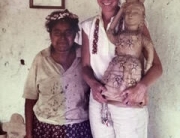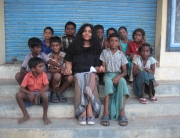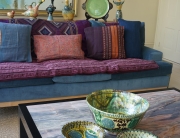
In the early 1970s, my parents moved us to the outskirts of Fredericksburg, Virginia, on the Fall Line between the Piedmont and Tidewater regions, an area with a rich farming tradition dating back to the founding of our nation. Having grown up in rural communities in the deep South, they wanted my brother and me to be connected to the land and understand agrarian culture and practices. This included our own vegetable gardens, cutting trees in the Summer to sell as pulp wood for our college funds, reading the Foxfire books documenting Appalachian life, and even helping with community hog slaughters when the autumn chill was just right.
Part of our life was spent duck and goose hunting. We kept and trained retrievers and brushed out the blinds on Chopawamsic Creek on the Quantico Marine Corps Base in late summer. We bought our licenses and duck stamps each Fall, and, eventually, we started making our own duck decoys. First, we made only “working” decoys, very primitive pieces usually rough-shaped from black industrial cork with a simple wooden head and minimal painting – just enough to look like a duck from high above. Hundreds of them, with lead weights attached by strings to hold them in place in the water. Before long my father, a Marine Corps Colonel and Wharton grad with no art training at all, started making more realistic, decorative pieces. And we started going to weekend events across the Mid-Atlantic where other “hunters” showed off their own handiwork and competed with one another in categories like “Best Working Decoy,” “Best Puddle Duck,” and, of course, “Best in Show – Decorative Class.”
In order to keep attending these events and to pay for the trips, my parents decided to start selling some of my father’s favorite tools to other carvers in the market area of the shows. Little did I know my entire career would start here at the duck decoy shows in towns like White Stone, Virginia and Havre de Grace, Maryland where local men, and a few women, with no formal art training, showed off a side of themselves they would probably never describe as artistic, but who quietly took extreme pride in having won a ribbon or two at their local show in the town fire hall.
“Folk Art” as a term came into my life in my early 20’s when my family’s growing woodcarving company started working with the Abby Aldrich Rockefeller Folk Art Museum in Colonial Williamsburg doing hand-carved reproductions of items in the collection. At the entrance to the galleries, Folk Art is defined as “paintings, sculptures, and other objects created by talented, self-trained artists and craftsmen.” (I would add to this definition that to me true Folk Art is often based in practicality but demonstrates our need to have beauty in our everyday life. Function does not disallow beauty.)
The lightbulb had turned on. I had been surrounded my entire life by just such works and by the humble people who made them. And in being so immersed from such a young age, I had an ingrained sense and appreciation of the humanity left within each piece by its’ maker. My parents’ home was filled with duck decoys, both simple and complex, that were made by friends and that brought with them a sense of family and tradition. I still have some of these pieces and can tell you more about the person who made them and the meals we had together than I can about the carving itself.
All the surfaces in our home, both horizontal and vertical, are brimming with memories, but not without thoughtfulness. We adhere religiously to the words of William Morris – “Have nothing in your houses you do not know to be useful, or believe to be beautiful.” Each and every piece brings us joy and reminds us of the amazing world community we belong to.





